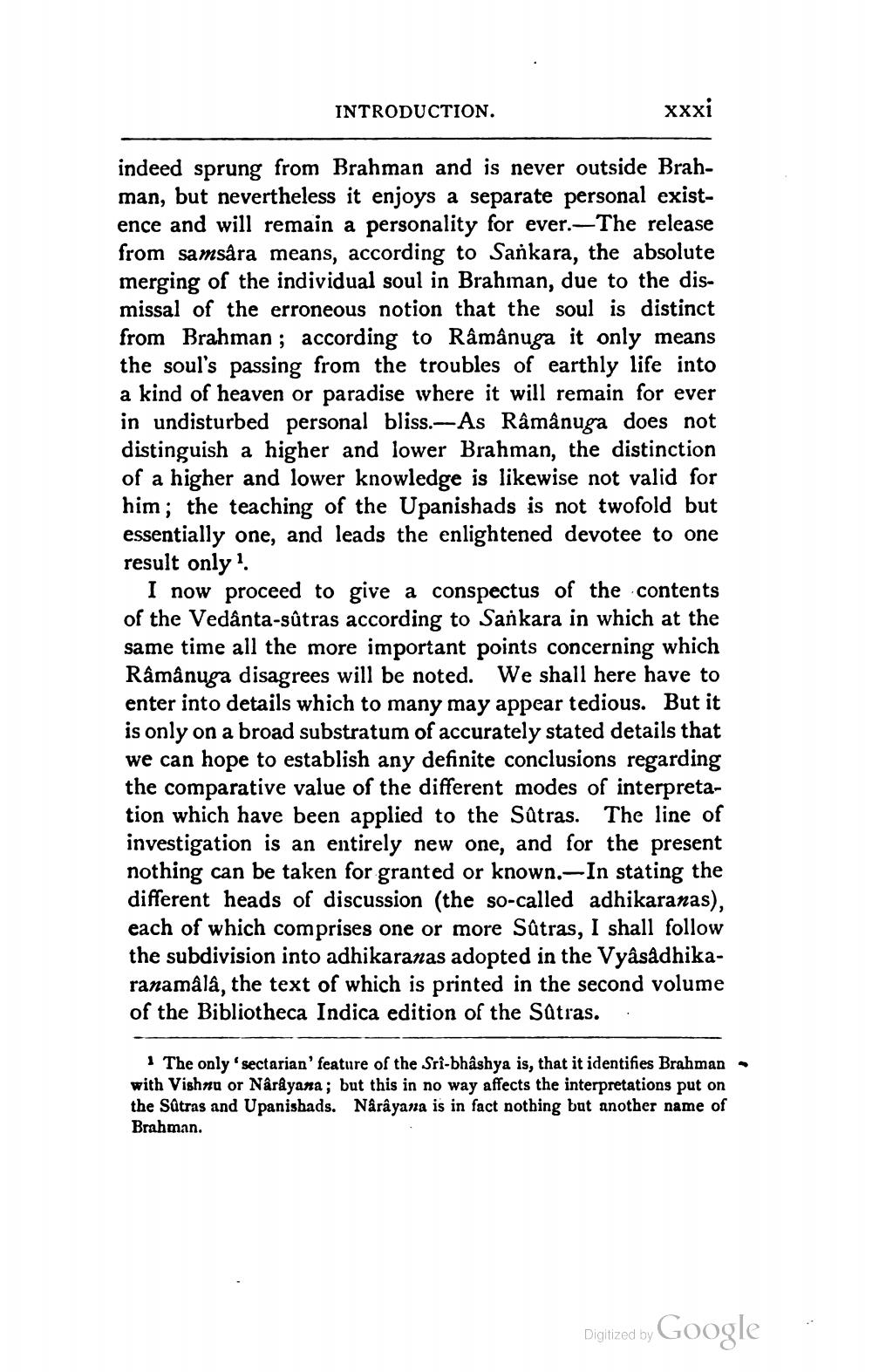________________
INTRODUCTION.
xxxi
indeed sprung from Brahman and is never outside Brahman, but nevertheless it enjoys a separate personal existence and will remain a personality for ever.—The release from samsåra means, according to Sankara, the absolute merging of the individual soul in Brahman, due to the dismissal of the erroneous notion that the soul is distinct from Brahman; according to Râmânuga it only means the soul's passing from the troubles of earthly life into a kind of heaven or paradise where it will remain for ever in undisturbed personal bliss.-As Râmânuga does not distinguish a higher and lower Brahman, the distinction of a higher and lower knowledge is likewise not valid for him; the teaching of the Upanishads is not twofold but essentially one, and leads the enlightened devotee to one result only?
I now proceed to give a conspectus of the contents of the Vedanta-sûtras according to Sankara in which at the same time all the more important points concerning which Râmânuga disagrees will be noted. We shall here have to enter into details which to many may appear tedious. But it is only on a broad substratum of accurately stated details that we can hope to establish any definite conclusions regarding the comparative value of the different modes of interpretation which have been applied to the Satras. The line of investigation is an entirely new one, and for the present nothing can be taken for granted or known.-In stating the different heads of discussion (the so-called adhikaranas), each of which comprises one or more Sûtras, I shall follow the subdivision into adhikaranas adopted in the Vyâsâdhikaranamâlâ, the text of which is printed in the second volume of the Bibliotheca Indica edition of the Satras..
1 The only sectarian' feature of the Sri-bhâshya is, that it identifies Brahman with Vishnı or Narayana; but this in no way affects the interpretations put on the Sätras and Upanishads. Nårâyana is in fact nothing but another name of Brahman.
Digitized by Google




